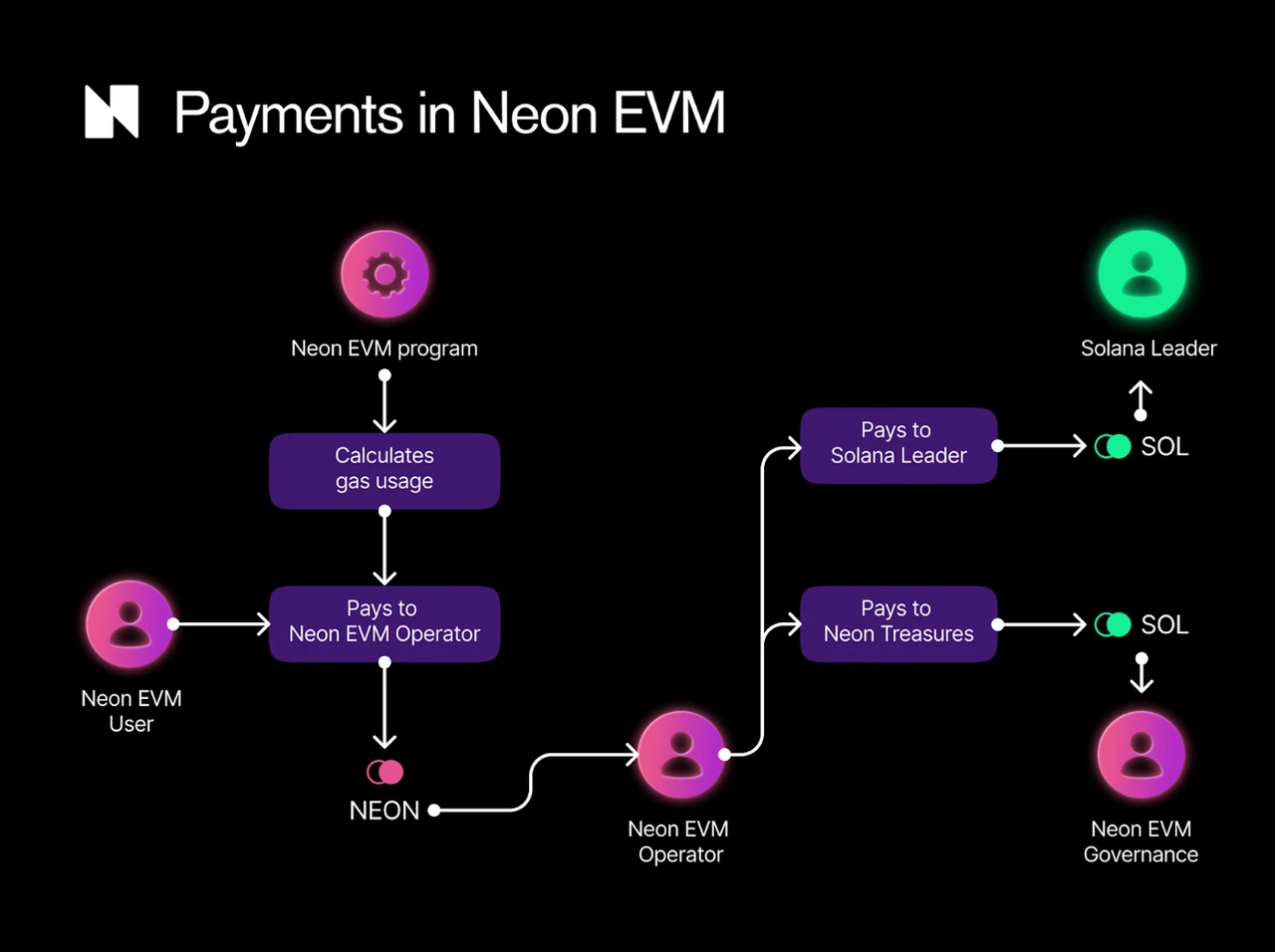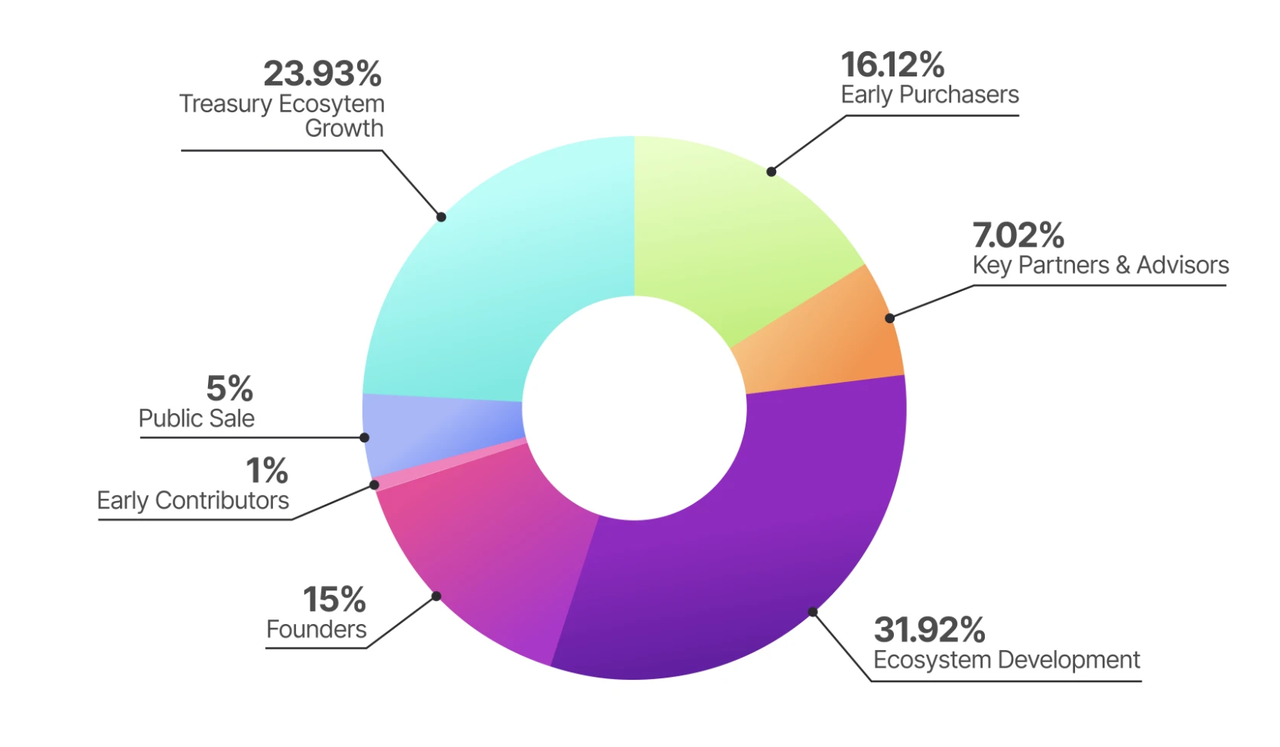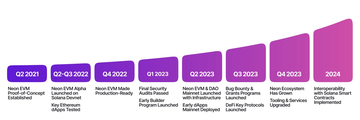Ethereum Dapps can migrate to the Solana public chain without modification, is the Neon EVM about to explode?
In November 2021, Solana's total locked value (TVL) reached an impressive historical high, surpassing the magnificent milestone of $10 billion. This achievement not only marked the flourishing development of the Solana ecosystem but also indicated its immense potential in the decentralized finance (DeFi) space. However, with the unexpected collapse of the FTX exchange, Solana suffered an unprecedented blow, leading to a massive withdrawal of funds, and its TVL continued to decline in the following months. By May of this year, the TVL had plummeted to approximately $266 million, just 2% of its peak.
This series of setbacks posed an urgent question for the Solana community and developers: how to revitalize this EVM (Ethereum Virtual Machine) heterogeneous chain and restore its vitality? A focal question emerged within the community—could EVM be introduced to Solana to attract more developers and projects?
Against this backdrop, Neon EVM was born. Founded in 2021, Neon Labs aims to deploy an EVM-compatible layer on Solana, which not only leverages Solana's low transaction fees but also attracts the developer community and mature decentralized applications (dApps) already familiar with EVM. The emergence of Neon EVM brings a glimmer of hope to Solana, signaling potential new development opportunities.

Neon EVM Banner Background Image
Although Neon currently has a market cap of only about $20 million, ranking #2319 on CoinMarketCap, indicating its relatively small market cap, it is still regarded as an underappreciated gem due to its unique technological advantages and strategic position within the Solana ecosystem.
Next, we will delve into the world of Neon EVM to explore further.
Neon EVM: The Link Between Ethereum and Solana's Technological Ecosystems
In the world of blockchain, Neon Labs has injected new vitality into Solana with its groundbreaking Neon EVM. This platform provides developers with a unique software environment where they can harness the powerful capabilities of the Ethereum Virtual Machine (EVM) to build and scale applications on Solana. Neon EVM is not just a compatibility layer; it serves as a bridge within the Solana ecosystem, connecting developers familiar with Ethereum tools to Solana's efficient liquidity.
The core advantage of Neon lies in its seamless integration capabilities. Developers can migrate their existing dApps to Solana without having to restructure their smart contracts. Neon EVM operates dApps through a carefully designed incentive system, transforming complex EVM operations into transactions that the Solana network can understand and execute.
The vision of the Neon team is to combine the best features of both worlds: Ethereum's mature development tools and language support, along with Solana's high performance and low-cost transactions. This vision is realized through three main components of Neon: the Neon EVM that executes EVM transactions, the Neon Proxy that converts these transactions into Solana network operations, and the Neon DAO that serves as the governance core.
Neon EVM ensures compatibility with Ethereum, retaining the developer-favored Solidity and Vyper programming languages, while also supporting key infrastructures like MetaMask, Hardhat, and Remix. The Neon Proxy acts as an intelligent intermediary, ensuring that EVM transactions are executed efficiently on Solana. Meanwhile, the Neon DAO is a decentralized governance framework that exists in the form of smart contracts on Solana, empowering the community to make decisions about the future direction of Neon EVM.
The emergence of Neon EVM marks a significant expansion of the Solana ecosystem, laying a solid foundation for its future growth and innovation.
Core Technical Points of Neon EVM: Ethereum Dapps Run Seamlessly on Solana Without Modification
In the race of blockchain technology, EVM compatibility has become a feature that many public chains are eager to deploy. NEAR achieved this through Aurora, while BSC, HECO, Polygon, Fantom, Avalanche, and others have followed suit. Participants in Solana are not to be outdone, and Neon EVM is their trump card in this competition. But how does Neon EVM operate?
Neon EVM builds a virtual execution environment on Solana that simulates the EVM, allowing native Ethereum contracts to run on Solana without any modifications. This is made possible by a group of specific operators who act as facilitators of transactions on Solana. These operators receive transaction requests from dApps, which are essentially Ethereum-style transactions, and then convert them into a format that Solana can understand and execute.
The architecture of Neon EVM can be divided into three key parts: first is the EVM itself, a complete EVM simulation environment running on Solana; second is the Web3 Proxy, a tool responsible for converting Neon-formatted transactions into Solana transactions; and finally, the EVM governance system, a complete governance framework responsible for managing the resources and policies of Neon EVM.
One of the major technical highlights of Neon EVM is its support for Berkeley Packet Filter (BPF) bytecode compilation, which fully leverages Solana's high performance and large throughput. The history of BPF dates back to 1992, originally used for packet filtering, but its application in modern Unix kernels has far exceeded its initial design. On Solana, the integration of BPF allows for the loading of other virtual machines, enabling parallel processing of transactions, and ensuring smooth transitions and updates for Neon EVM during protocol upgrades, even in the case of hard forks.

Payment Process of the Neon EVM Ecosystem
These technical features make Neon EVM not just a plugin for the Solana ecosystem; it actually brings a new dimension to Solana. Through Neon EVM, dApps on Ethereum can easily migrate to Solana with almost no changes to the code, unlocking Solana's inherent advantages in speed and cost efficiency. This is not only a technological leap but also provides the developer community with unprecedented flexibility and interoperability.
Neon Token Economic Model: Early Buyers Can Obtain 16.12% of Assets but Locked for One Year
After the technological innovations of Neon EVM paved the way for its position in the Solana ecosystem, its token economic model is also worthy of attention. The Neon token is not just a medium of exchange; it plays a crucial role throughout the Neon compatibility layer. Users need to use Neon tokens to pay the proxy operators during transactions, who then use SOL to pay the validators on the Solana network. This design not only ensures smooth transaction processes but also provides a continuous revenue stream for the Neon project itself.
The tokenomics of Neon EVM is transparent, with a total issuance of 1 billion Neon tokens. In this economic system, the public sale accounts for 5% of the total supply, or 50 million tokens, each priced at $0.1. This pricing strategy and distribution model aim to balance early liquidity with long-term development.

Distribution Model of Neon Tokens
The distribution strategy for Neon tokens is as follows:
Early buyers will receive 16.12% of the tokens, which will have a one-year lock-up period, followed by linear release over the next year to incentivize early investors' confidence and patience.
Major partners and advisors are allocated 7.02%, demonstrating a long-term commitment to these key supporters, whose tokens will also have at least a one-year lock-up period before starting linear release.
Ecosystem development accounts for 31.92%, a significant allocation that reflects Neon’s emphasis on the long-term prosperity of the ecosystem, with these tokens used to incentivize developers and other ecosystem participants.
The founding team receives 15%, with a one-year lock-up period for these tokens, which will also be released linearly afterward, ensuring alignment of interests between the team and the project.
Early contributors receive 1%, rewarding those individuals or teams who provided assistance in the early stages of the project.
The public sale portion accounts for 5%, with these tokens fully unlocked on July 17, 2023, providing initial liquidity to the market.
Ecosystem growth (treasury) accounts for 23.94%, with the use of these tokens to be determined by community governance proposals, reflecting Neon’s commitment to decentralized governance.
Through this tokenomics design, Neon EVM not only provides users with an efficient trading environment but also offers participants a fair incentive mechanism. This economic model is designed to ensure the sustainability of the Neon project while injecting new vitality into the future growth of the Solana ecosystem.
After Successful Launch, Neon EVM's Future Performance is Worth Looking Forward To
With the successful launch of Neon EVM on the mainnet in July this year, a new chapter has begun in the Solana ecosystem. This milestone event not only signifies the technical maturity of Neon EVM but also indicates that its token economic model will begin to take effect in the real world. The mainnet launch of Neon EVM brings unprecedented EVM compatibility to Solana, providing Ethereum developers with a new efficient platform while opening up new possibilities for Solana's users and investors.

Development Roadmap of the Neon EVM Ecosystem
The mainnet launch of Neon EVM is the ultimate validation of its technological innovation and economic model, proving the Neon team's commitment to the project vision and their profound understanding of blockchain technology. As the incentive mechanisms of the Neon token economy begin to take effect, we can expect a more diverse and vibrant Solana ecosystem to emerge. The successful deployment of Neon EVM not only injects new vitality into the Solana ecosystem but also sets a new benchmark for interoperability and scalability in the entire blockchain world.
Looking ahead, the mainnet launch of Neon EVM is just the beginning; it will trigger a chain reaction of innovations and developments. As more developers and projects join, we have reason to believe that Neon EVM will continue to drive the Solana ecosystem towards a more prosperous and diverse future.









